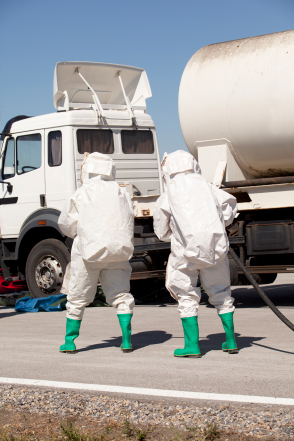Exactly How Liquid Garbage Disposal Functions: An In-depth Review of Techniques and Technologies Employed

Summary of Fluid Waste Kind
The complexity of fluid waste kinds requires a detailed understanding of their qualities and implications for disposal. Fluid waste can extensively be categorized into several kinds, consisting of commercial, municipal, agricultural, and contaminated materials. Each classification shows distinct properties, needing specific monitoring methods to mitigate environmental and health and wellness threats.
Industrial liquid waste originates from manufacturing procedures and usually contains a variety of contaminants, such as hefty steels, solvents, and natural substances. Municipal fluid waste, primarily consisting of wastewater from houses and commercial establishments, has raw material, nutrients, and virus (industrial wastewater treatment). Agricultural liquid waste, including overflow from farms, might include fertilizers, chemicals, and pet waste, posturing dangers to water quality and environments
Hazardous liquid waste is characterized by its poisoning, reactivity, or potential to create harm. Understanding these varied liquid waste kinds is essential for creating effective disposal approaches and making certain compliance with ecological guidelines.
Physical Treatment Techniques

Screening is the preliminary action, where larger bits and debris are eliminated from the fluid waste using screens or grates. In sedimentation containers, heavier particles resolve at the base, developing a sludge layer, while the made clear liquid can be further dealt with.
Filtration is one more important technique that entails passing the liquid through permeable products, such as sand or membranes, to record smaller bits. This step improves the high quality of the liquid, making it ideal for subsequent treatment procedures.

Chemical Treatment Techniques
Chemical treatment strategies are vital for effectively managing fluid waste, especially in addressing dissolved and colloidal contaminants that physical approaches might not effectively remove. These strategies utilize different chemical agents to counteract, speed up, or transform hazardous compounds right into much less unsafe kinds.
One usual method is coagulation and flocculation, where chemicals such as alum or ferric chloride are contributed to advertise the gathering of put on hold fragments. This process boosts sedimentation, permitting less complicated elimination of the resulting sludge. Furthermore, oxidation processes, utilizing representatives like chlorine or ozone, are employed to break down complicated organic compounds and microorganisms, making the waste much safer for discharge try this website or more therapy.
Neutralization is another critical technique, which adjusts the pH of acidic or alkaline waste streams to neutral levels, avoiding prospective damage to downstream systems and the environment. Moreover, progressed oxidation processes (AOPs) Read More Here use mixes of oxidants and ultraviolet light to deteriorate consistent contaminants, accomplishing a greater degree of treatment performance.
Biological Treatment Procedures
Organic treatment processes play an essential duty in the administration of fluid waste by using bacteria to disintegrate organic matter and decrease impurity degrees. These procedures can be generally categorized into cardio and anaerobic therapies, each utilizing details microbial neighborhoods to accomplish effective waste deterioration.
Cardiovascular treatment includes making use of oxygen to promote the failure of natural products by microorganisms. This procedure is generally applied in activated sludge systems, where oygenation tanks supply a conducive environment for microbial growth, causing the oxidation of organic contaminants. The resultant biomass can be divided from treated effluent with sedimentation.
In comparison, anaerobic treatment happens in the absence of oxygen, counting on various bacteria to break down organic issue. This approach is specifically helpful for high-strength waste, as it generates biogas, a renewable power resource, while reducing sludge manufacturing. Technologies such as anaerobic digesters are frequently used in commercial and metropolitan applications.
Both cardiovascular and anaerobic biological treatments not only lessen the ecological impact of fluid waste but additionally assist in resource healing, making them essential components of lasting waste management methods. Their versatility, efficiency, and effectiveness support their widespread execution across numerous sectors.
Arising Technologies in Disposal
Innovative strategies to liquid waste disposal are swiftly progressing, driven by developments in innovation and a raising focus on sustainability. Among these emerging technologies, membrane bioreactors (MBRs) have actually gotten traction for their ability to visit this site combine organic treatment with membrane layer filtration, leading to high-grade effluent that can be recycled in various applications. MBRs make it possible for smaller sized footprints and a lot more reliable operations compared to typical systems.
Another promising growth is the usage of anaerobic digestion incorporated with nutrient healing modern technologies, which not only deals with fluid waste yet also creates biogas and recovers useful nutrients like nitrogen and phosphorus. This double advantage boosts resource efficiency and lowers ecological influence.
Additionally, advanced oxidation processes (AOPs) are being adopted for the destruction of complex organic toxins. These techniques use powerful oxidants and catalysts to damage down impurities at the molecular level, using a highly reliable service for challenging waste streams.
Furthermore, the combination of expert system and maker learning in waste management systems is enhancing operational performance and anticipating upkeep, bring about reduced prices and enhanced ecological conformity. These innovations mirror a significant change towards even more reliable and sustainable fluid waste disposal practices.
Verdict
In conclusion, reliable liquid waste disposal necessitates a thorough understanding of various methods and modern technologies. By continually advancing these methods, it becomes possible to attend to the expanding obstacles linked with fluid waste, eventually contributing to ecological defense and source healing.
Fluid waste disposal is an important facet of environmental management, needing a detailed understanding of different techniques and modern technologies customized to various waste kinds. Liquid waste can generally be classified right into numerous kinds, consisting of commercial, community, farming, and unsafe waste. Agricultural liquid waste, including overflow from farms, may include fertilizers, pesticides, and pet waste, positioning dangers to water quality and ecological communities.
Various physical therapy methods play a critical function in taking care of fluid waste properly - industrial wastewater treatment.In final thought, effective liquid waste disposal demands an extensive understanding of numerous strategies and technologies
Comments on “Professional Liquid Waste Removal Melbourne: Quick and Affordable Services”